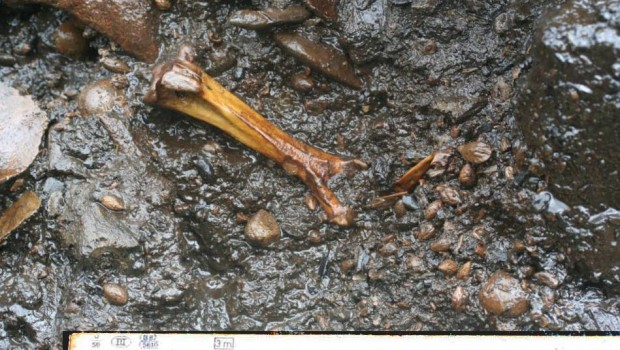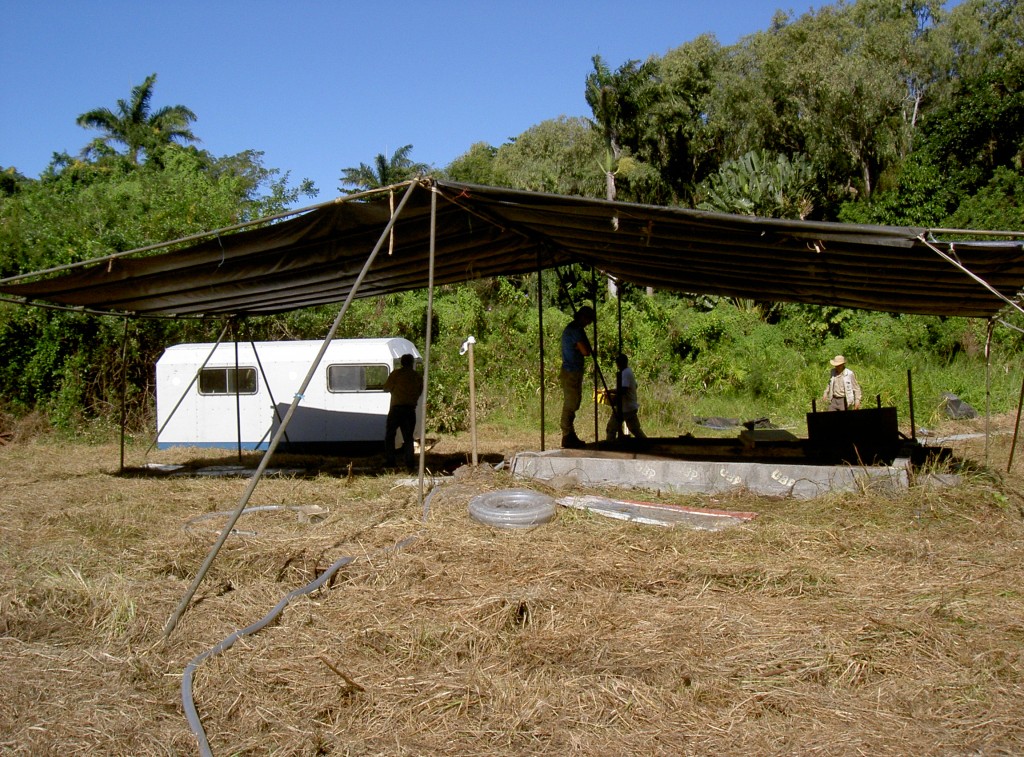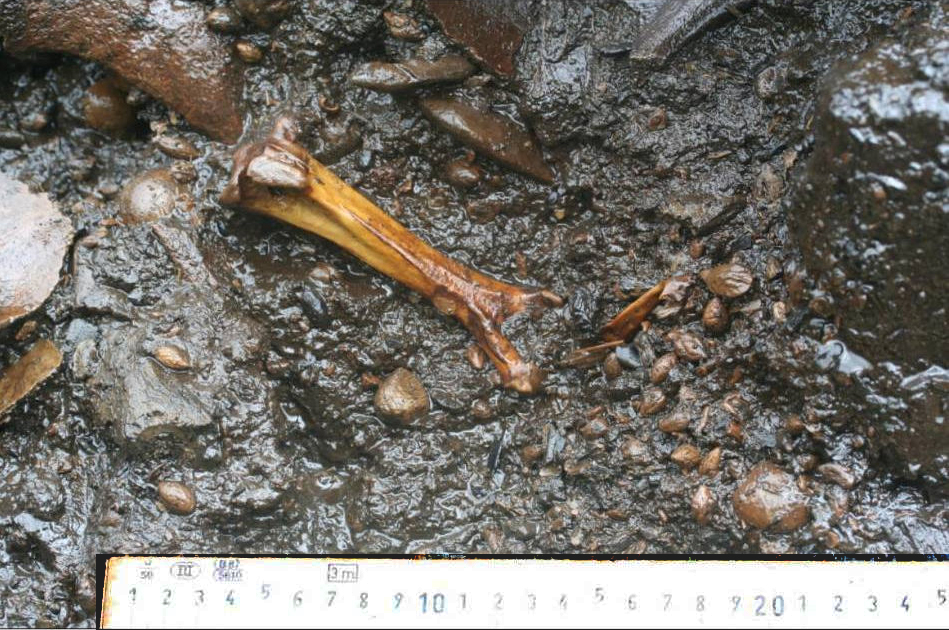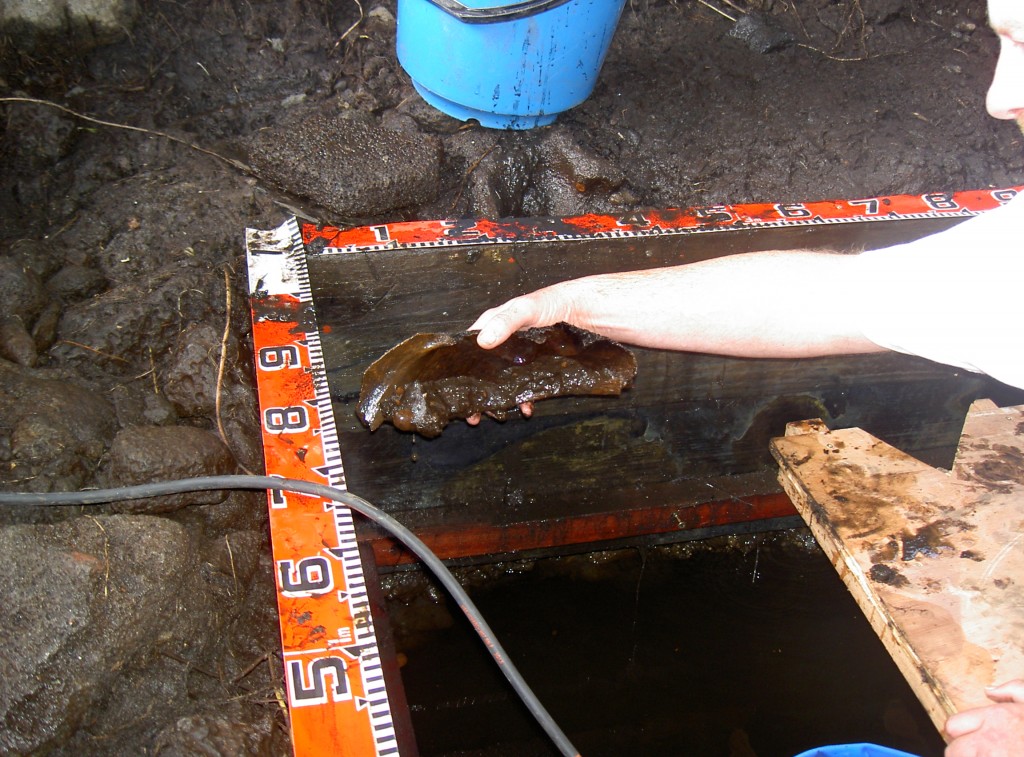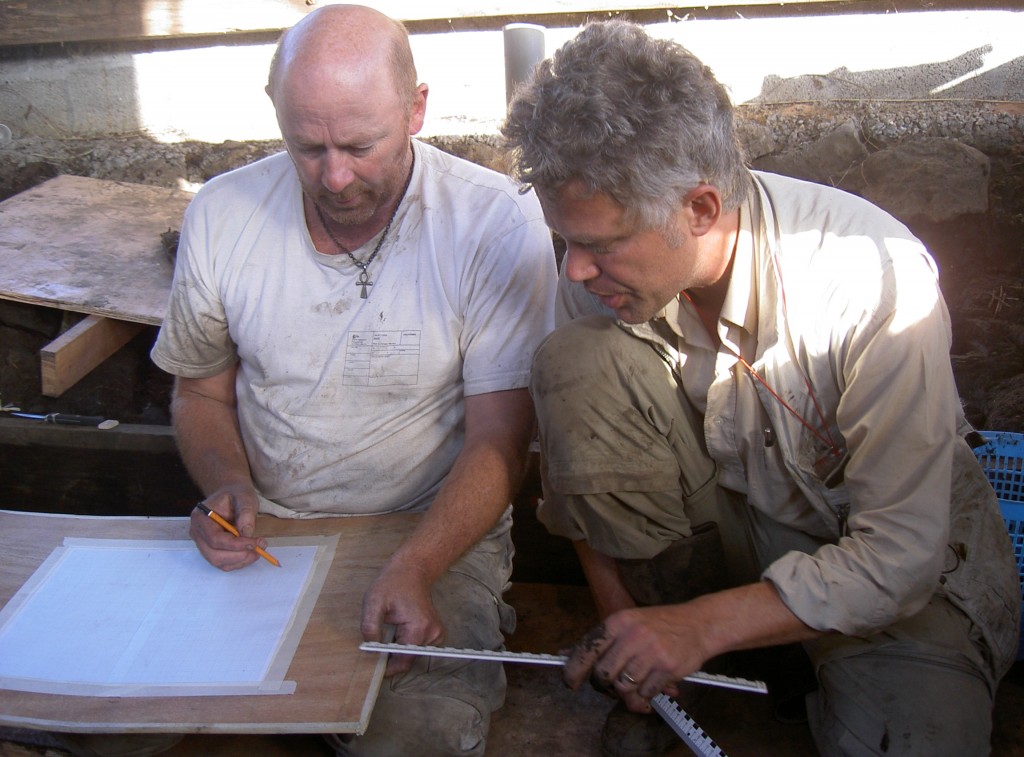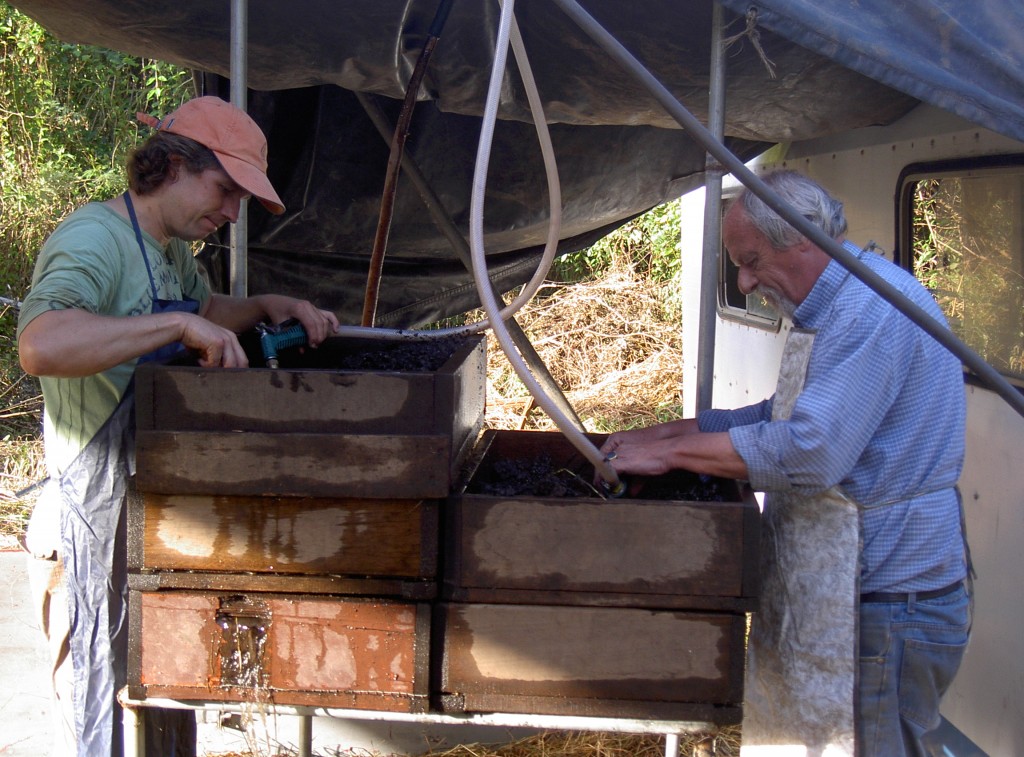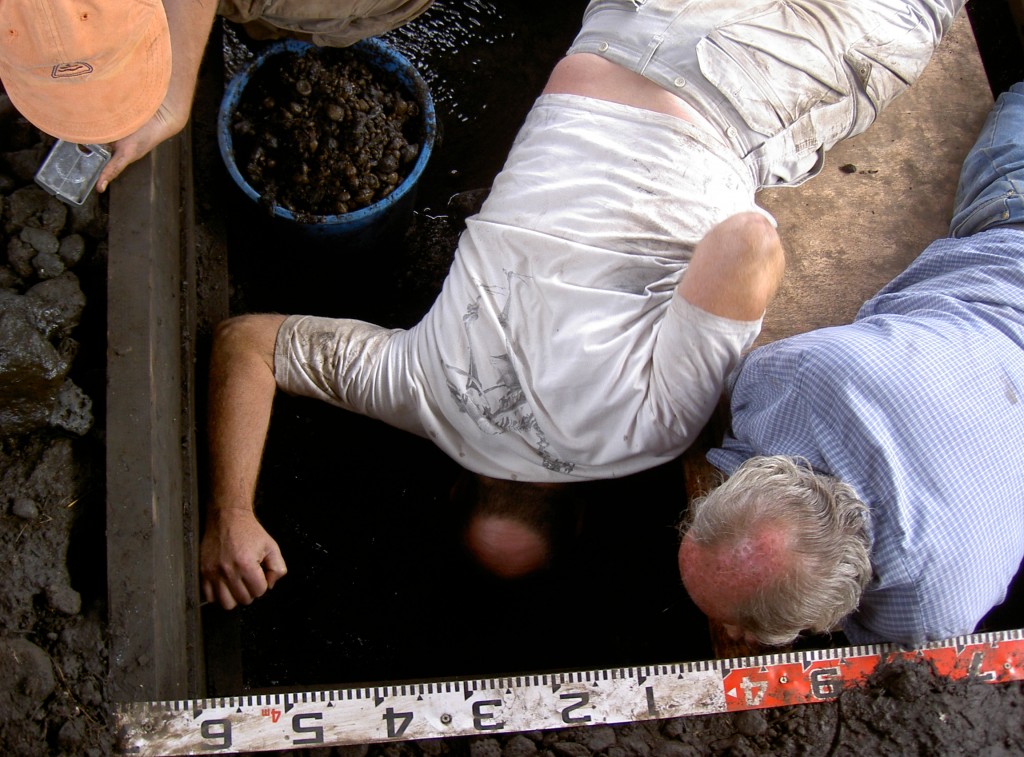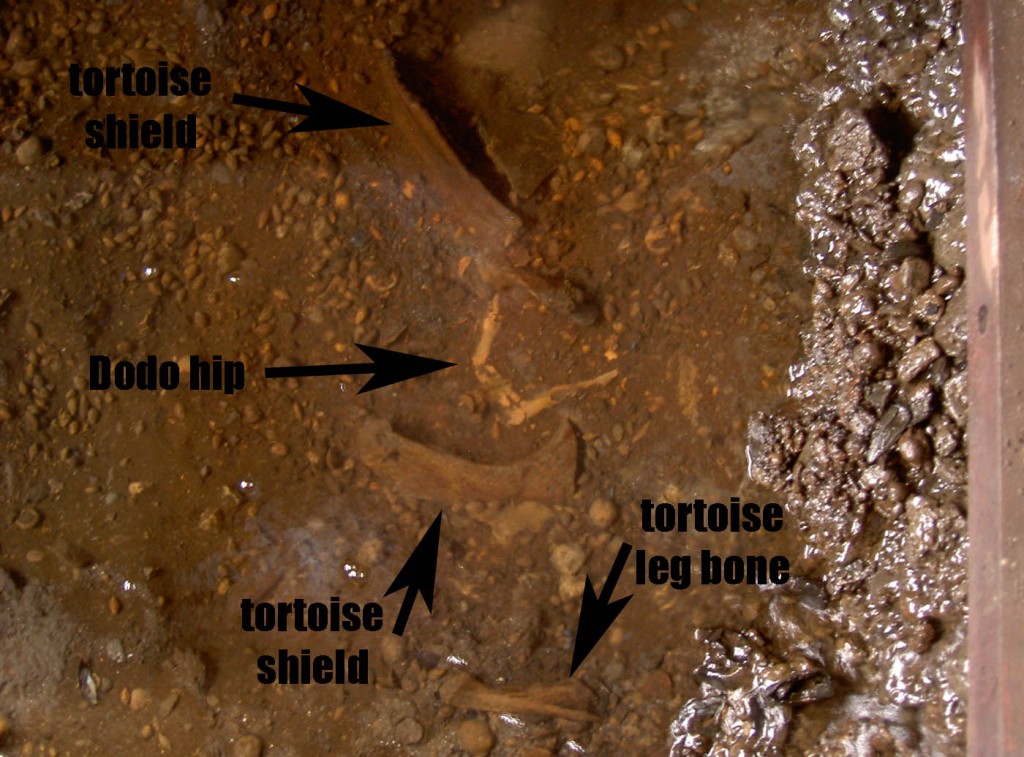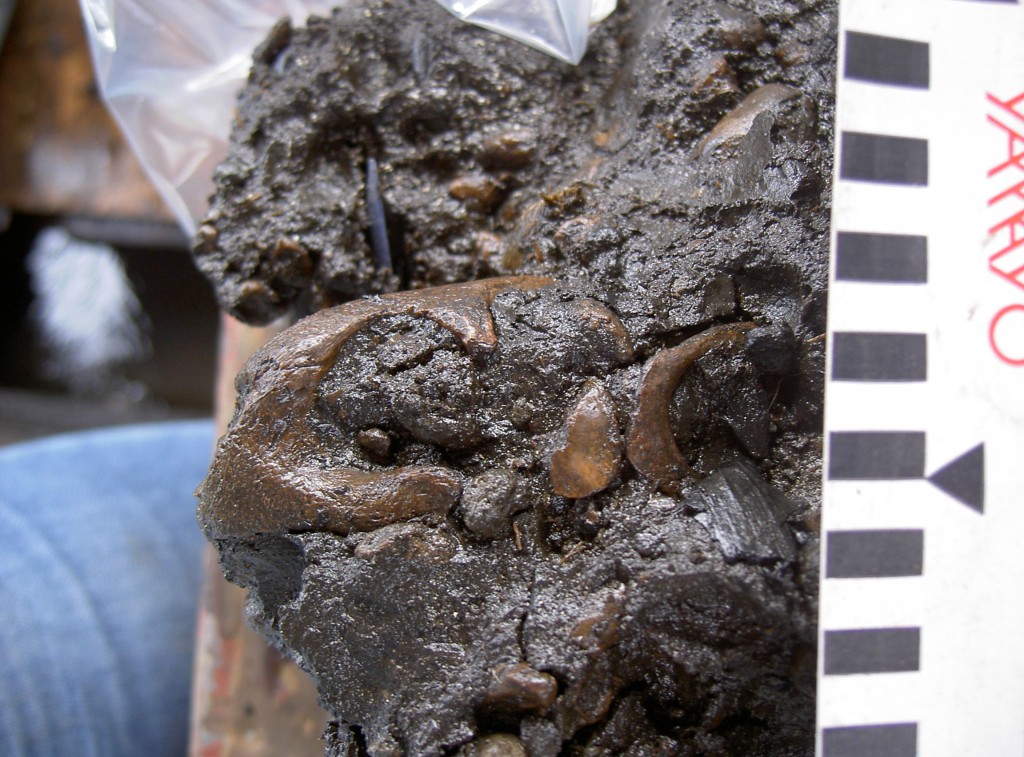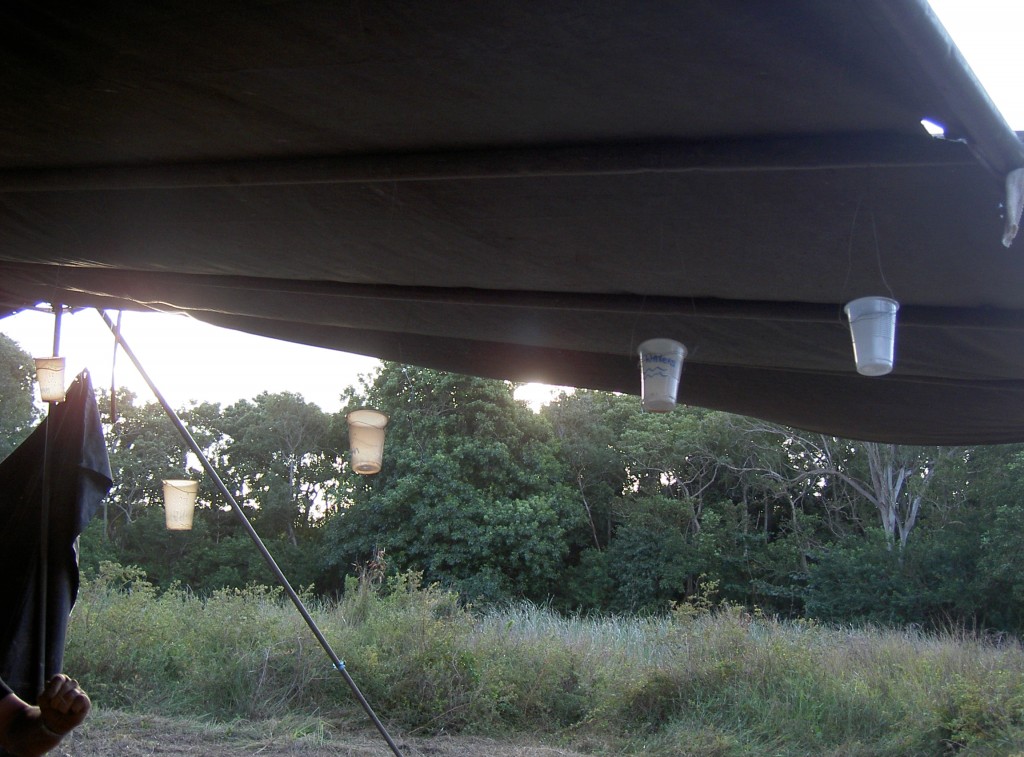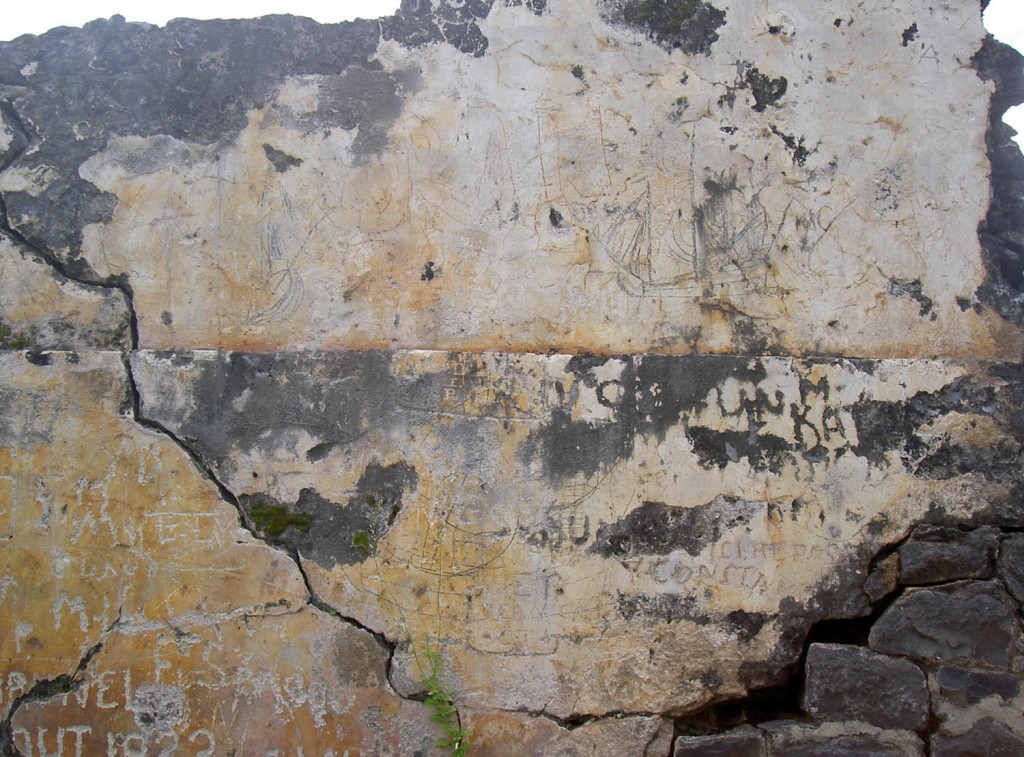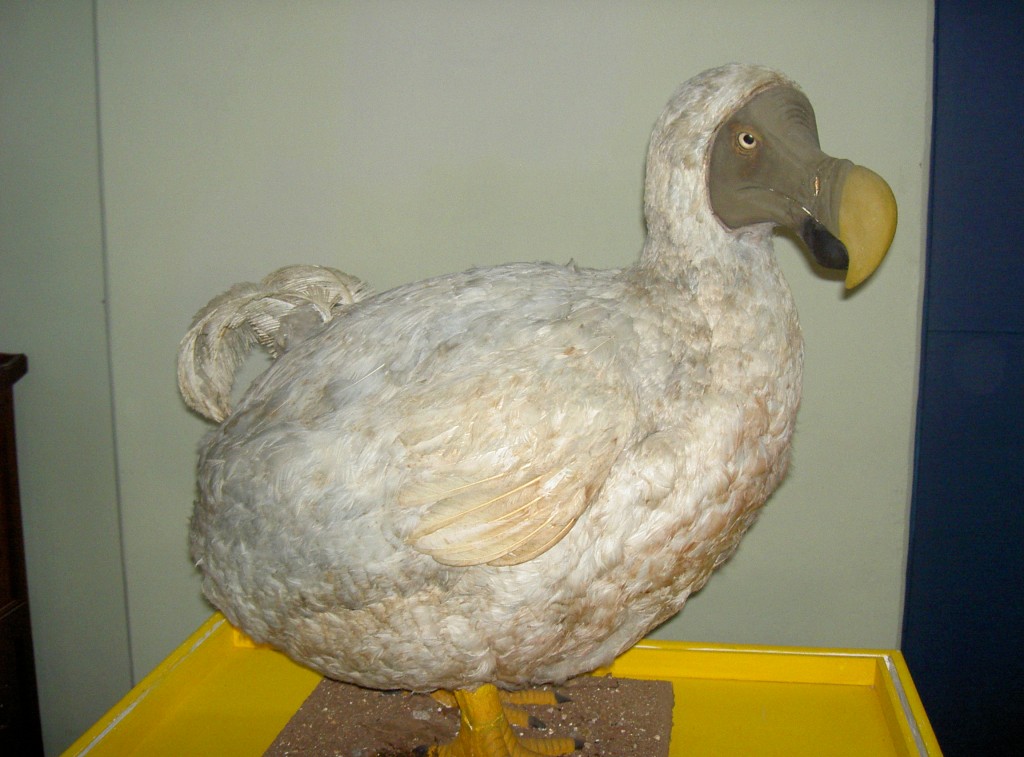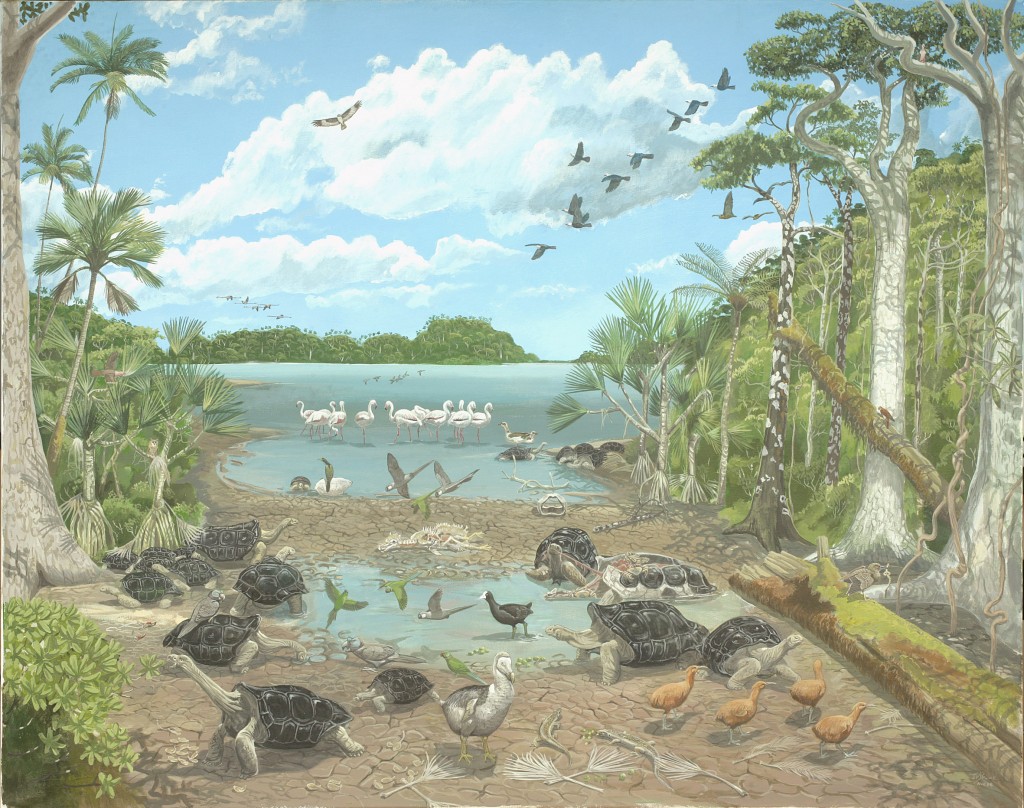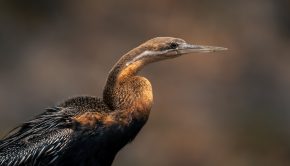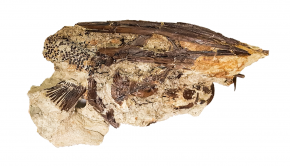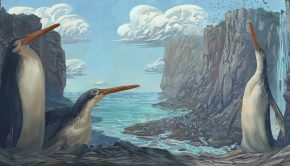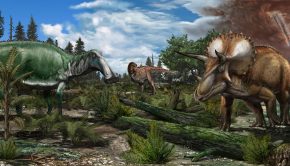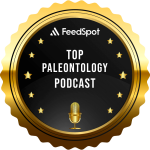Episode 27: Mare aux Songes
One of the most iconic animals to ever have gone extinct is the dodo, Raphus cucullatus. Endemic to Mauritius, this flightless bird was last seen around 1662 and is thought to have been driven to extinction by invasive species brought along by humans. Despite their relatively recent extinction, few dodo specimens remain. Discovering new material is therefore vital for our better understanding of this bird.
One dodo-bearing locality is the ‘Mare aux Songes’, a marsh on the South-East of the island. Here Dr Hanneke Meijer, Institut Català de Paleontologia, has been excavating bones as part of the Dodo Research Programme.
Podcast: Download (Duration: 33:31 — 26.9MB)
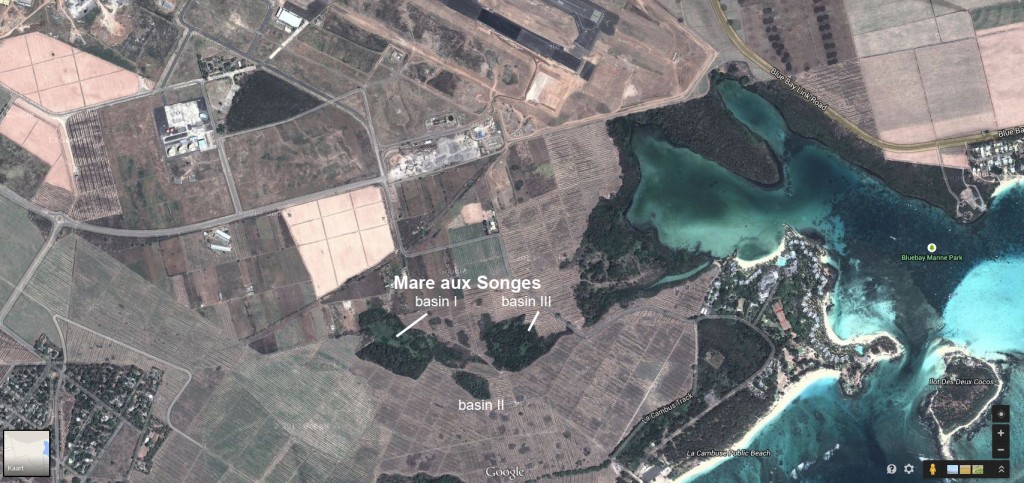
Google Earth image of southeast Mauritus, showing the location of Mare aux Songes with basins I, II and III. Note the close proximity of Mare aux Songes to the sea in the east, as well as to the airport in the north.
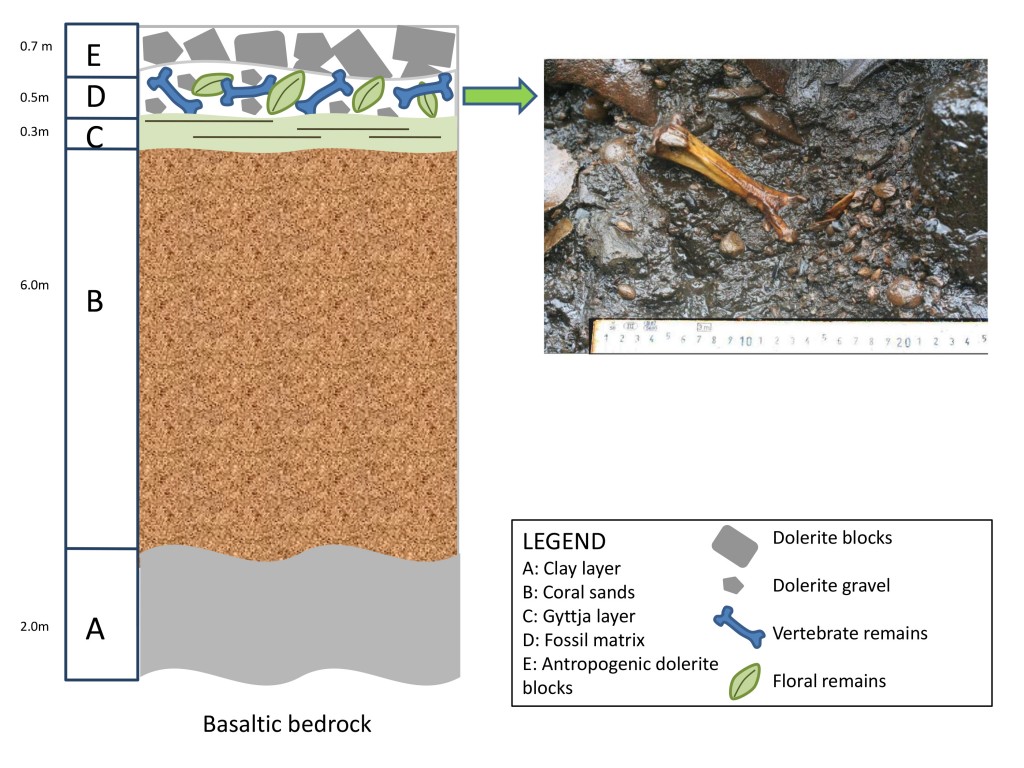
Generalised stratigraphic profile of basin I based on stratigraphic profiles of three trenches within basin I by Rijsdijk et al (2009). Actual thicknesses of layers A–E vary depending upon location within the basin. Top of profile is located at −1 m below sea level. Detail of layer D depicts vertebrate remains, with tarsometatarsus of R. cucullatus in the middle within matrix of floral remains and debris.
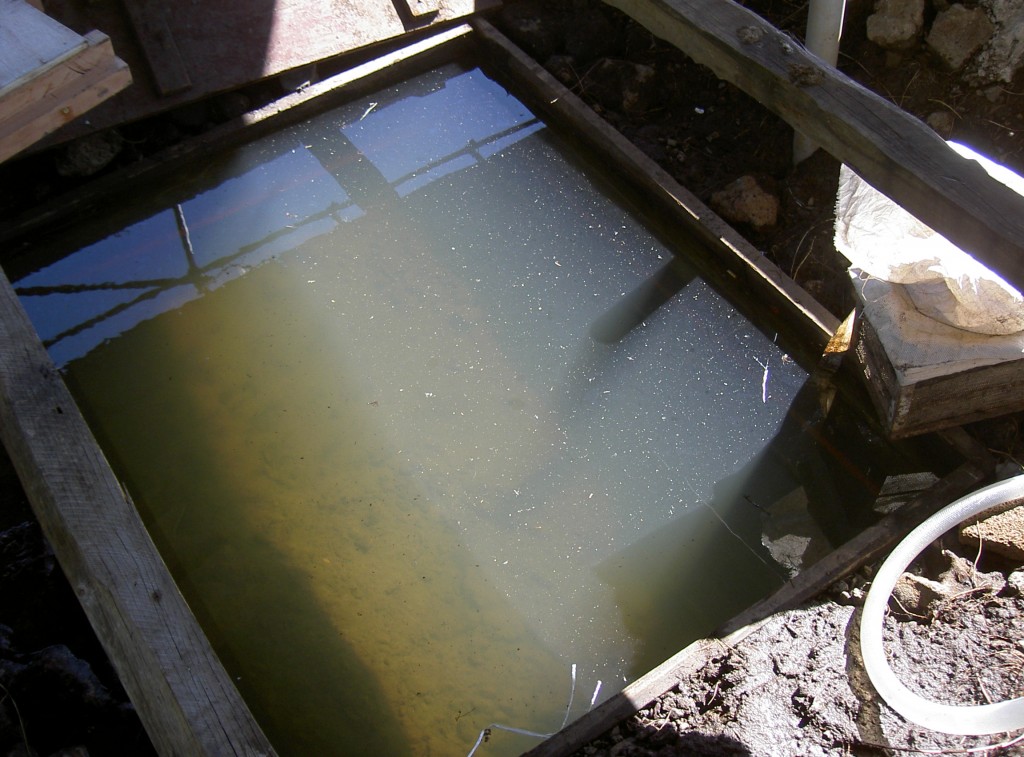
View of the dodo polder full of groundwater, before the start of the excavation. The bone layer can be seen at the bottom of the pool of water.
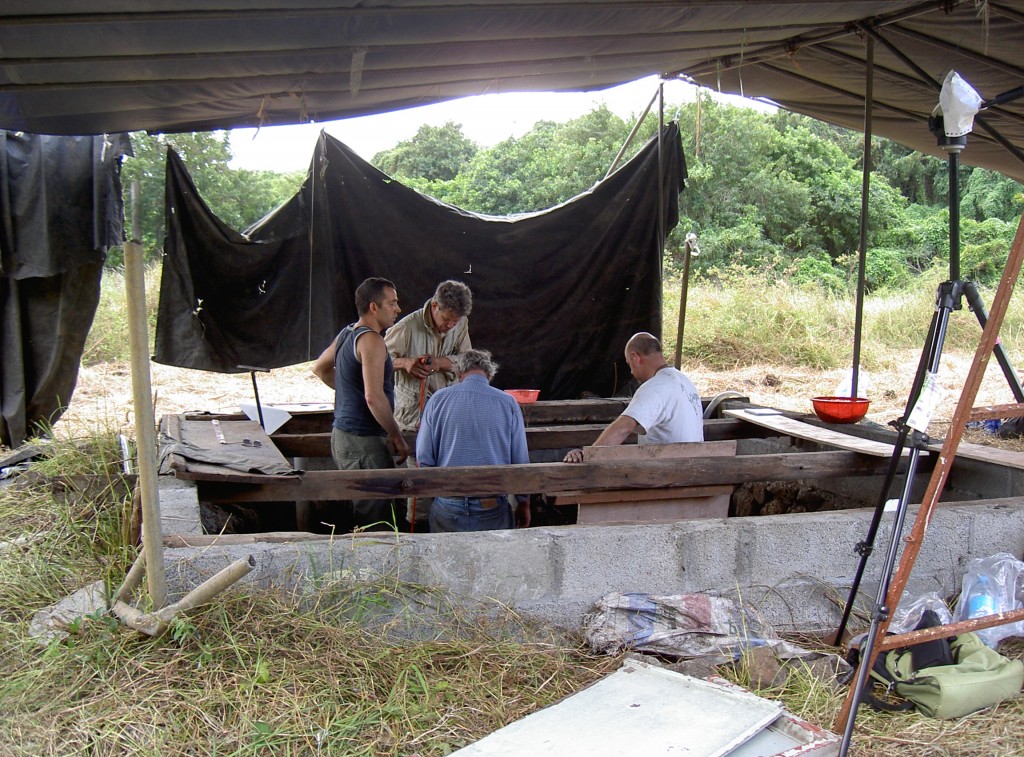
Members of the Dodo Research Programme discussing the excavation. Fltr: Michael Rijsdijk (photographer), Kenneth Rijsdijk (geologist), John de Vos (paleontologist) and Julian Huma (paleontologist).
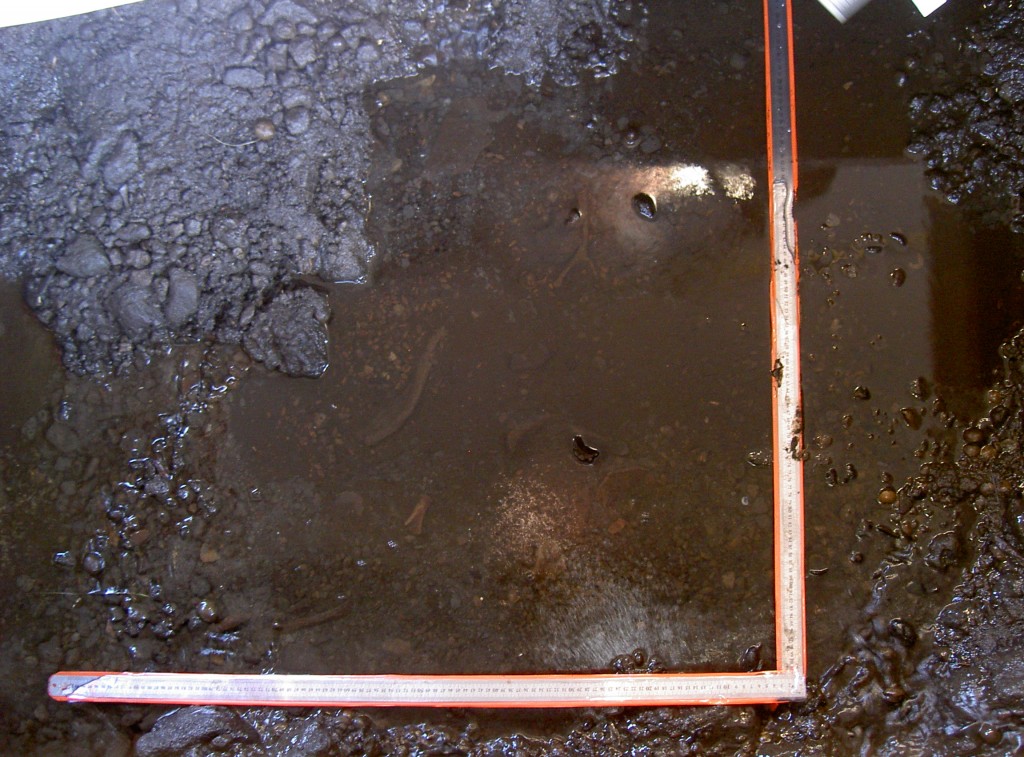
View of the (partially) dry excavation surface. The bone-matrix is on average 0.5 m thick and consists almost entirely of bones, seeds and wood.
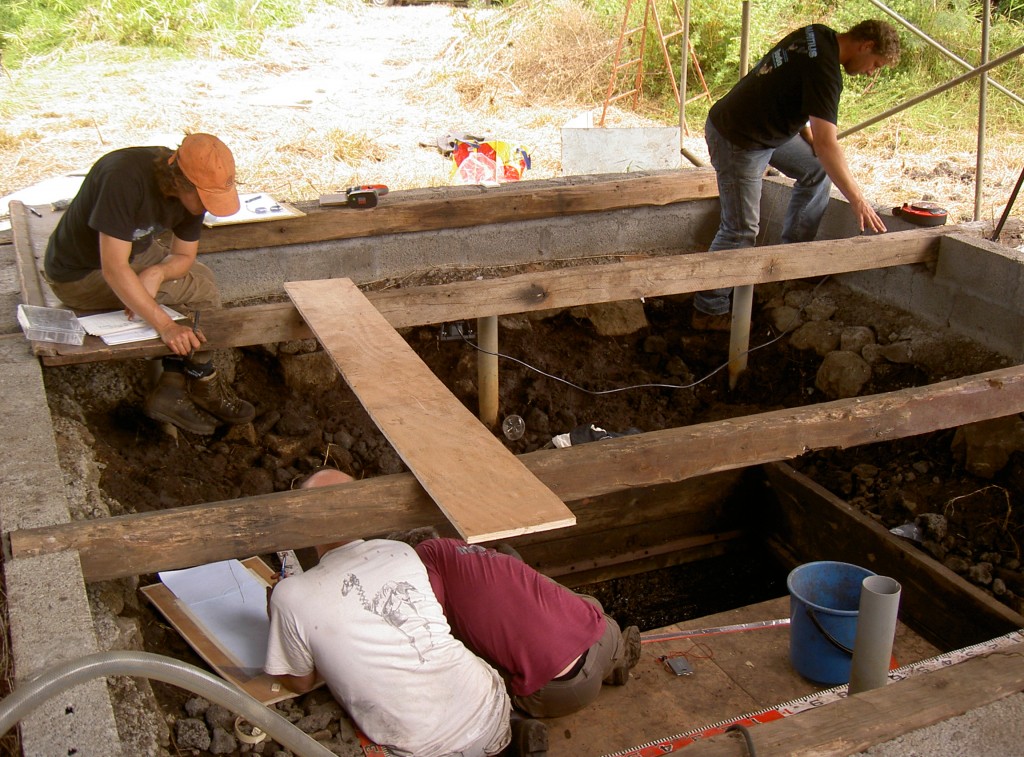
Work at the dodo polder. Perry (upper left) is taking notes and mapping findings, while Julian and Kenneth are down in the polder excavating from the wooden platforms. Rene (upper right) makes sure the technical side of things run smoothly.
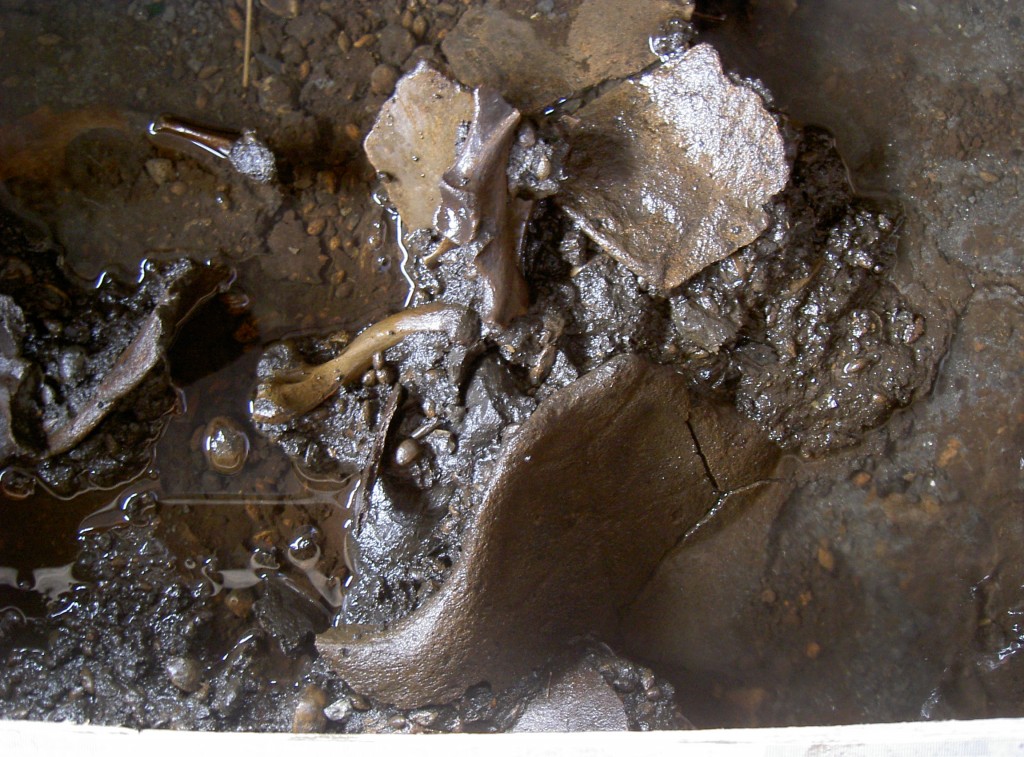
View of different part of excavation surface with a jumble of tortoise bones and carapace fragments. Clearly visible on the lower left are the large round seeds of the dodo tree, Sideroxylon grandiflorum, or tambalacoque.
This video was shot during the 2009 field campaign and gives an impression of what it’s like in the field. The constant noise is the sound of the pumps pumping out the water from the dodo polder. Credit goes to Dodo Research Programme.
Unless otherwise stated, all images courtesy of Hanneke Meijer.

